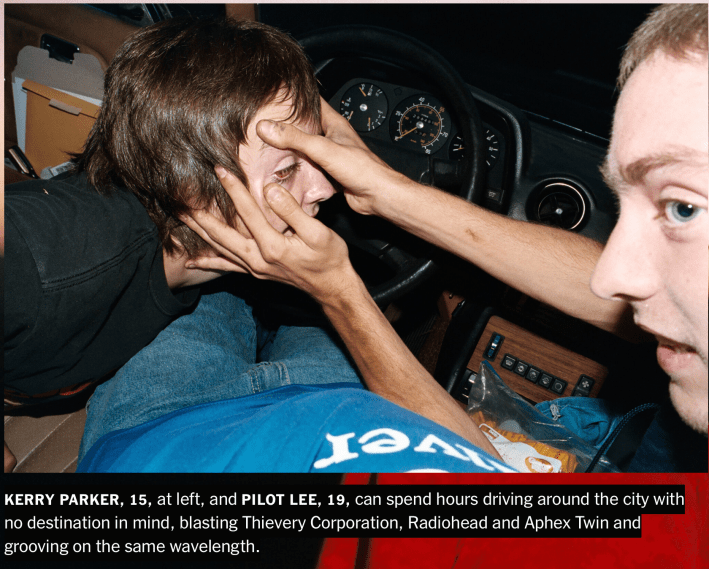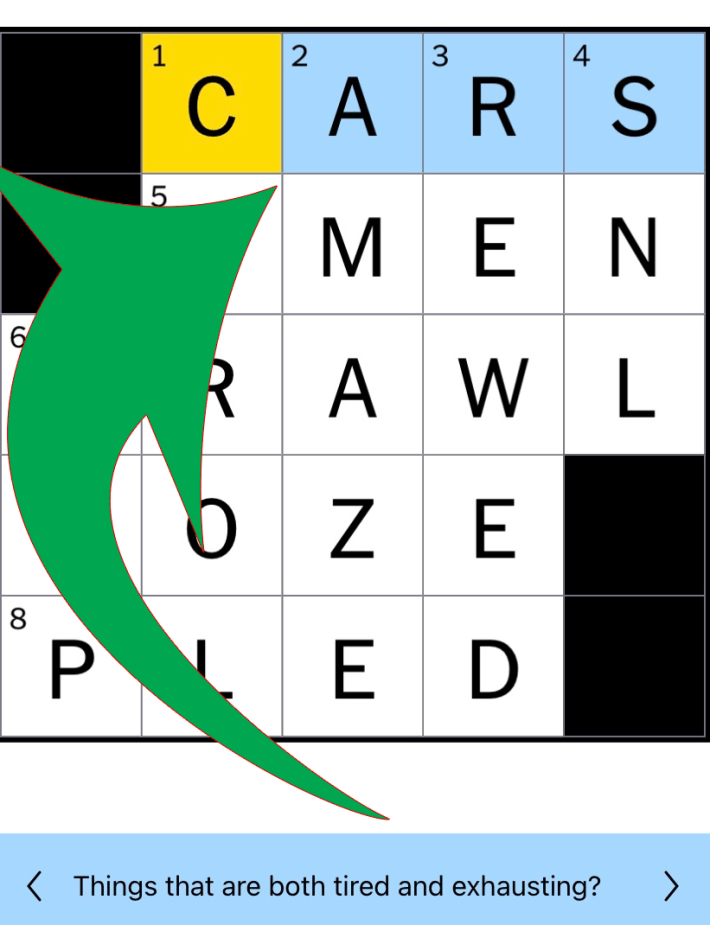We've had our issues with the car-culture-influenced Times over the years, but yesterday's interactive feature on the "joy" and "freedom" of the "American rite of passage" was the latest effort by the Paper of Record to glorify the one or two positives of cars while ignoring the 743 (at least count) negatives of the privately owned automobile and what it has wrought on our nation.
No one should be surprised by the paper's latest effort to hype the automobile, even at this late date. But anyone who cares about truth, let alone the future of our planet, should object to the Times's latest trope-bolstering effort about teenagers’ experiences with their first cars.
In fact, the actual photos by Adali Schell and text by Remy Tumin were about everything else but joy and freedom. Like the "Heroin Chic" photography movement a generation ago, this Times team actually falls into the abyss of the culture it purports to cover.
As we have so often pointed out, this so-called “American rite of passage” is a “rite” only because our culture — one built over the last 100 years by car companies; propped up mainly by privilege; and enabled by ad-hungry Establishment organs like the Times and by generations of politicians and public servants whose notion of “progress” mimics that of Robert Moses — is profoundly troubled.
It may be true that young people feel that a dangerous, expensive machine is the only way to experience independence and a sense of self. But the Times has a responsibility to not celebrate this privileged rite, but rather to expose its root cause: Our nation has spent 100 years building cities and towns that isolate people and heighten car dependency, which, of course, is the goal of car manufacturers with little interest in the physical and social well being of our kids.
Beyond that, the "sense of security” that Schell and Tumin describe exists only in the wishful imagination of Times editors: More than 43,000 Americans were killed in car crashes last year, almost all of them preventable through regulation of vehicle size, restrictions on who can earn the privilege of driving, technology like speed governors, redesign of roadways, or any number of other safety initiatives long sought by advocates. The Times hails the "freedom of the road," but that freedom is actually unrelenting peril. The fact is, teenagers are far safer outside of cars than inside — and if they feel otherwise, that is a profound failure of a national culture that doesn’t give America’s youth a place to call their own beyond the seat of a car.

That point was well made by Schell and Tumin (see the caption above) — but one picture showing two young people kissing by the side of the road seeks to consecrate this horrific public space rather than push America to a new paradigm of dignity, respect, and, yes, safety for our young people, especially those who lack the means to own and maintain a car.
If the only place young people feel safe and free is in cars or on highway roadsides, our country has a serious problem — one that we hope the Times will address beyond its climate coverage.
On the plus side, did you see that the Times mini-crossword at least had a great clue and answer on Tuesday (below right)?
In other news:
- Could former Mayor Bill de Blasio finally be getting that job in Washington that he always wanted? No, but maybe another job! (NY Post)
- Here's one way to reduce the likelihood that a police traffic stop will lead to violence (NY Times), but would it be easier to just get cops out of traffic stops?
- The MTA says it's doing better by Access-a-Ride customers, but customers aren't so sure. (amNY)
- Gothamist covered the City Council's very slow pace on passing a permanent outdoor dining bill.
- We're glad someone is covering the cruise ship pollution story — and the failure of the Red Hook terminal to fully employ its shore power system to allow boats to not have to idle all day. (The City)
- Fresh into our inbox yesterday came a press release from the group Parks and Trails New York alerting us that Paul Steely White is the new executive director. He'll replace the group's longtime leader, Robin Dropkin, who is retiring. Streetsblog readers will remember White fondly from his long tenure as head of Transportation Alternatives during the group's more confrontational era. In his first public statement in his new role, White made it sound like Parks and Trails New York would be striking out near parks and trails of advocacy: “Public lands must be within closer reach to those who need them most. We saw from the pandemic that parks and trails are not just ‘nice things to have,’ they are critical public health infrastructure." We wish White the best of luck in the new position.
- And, finally, there was a bit of justice for a hard-working vendor:
BREAKING: Per reporting from @kduggan16, @NYCParks says it has voided this ticket, issued "in error" because he was not on park land. That's good for MD Rahman in this case, but we need to know more going forward about how the city will treat essential workers like him. https://t.co/44R3cibQZK
— Streetsblog New York (@StreetsblogNYC) February 9, 2023







